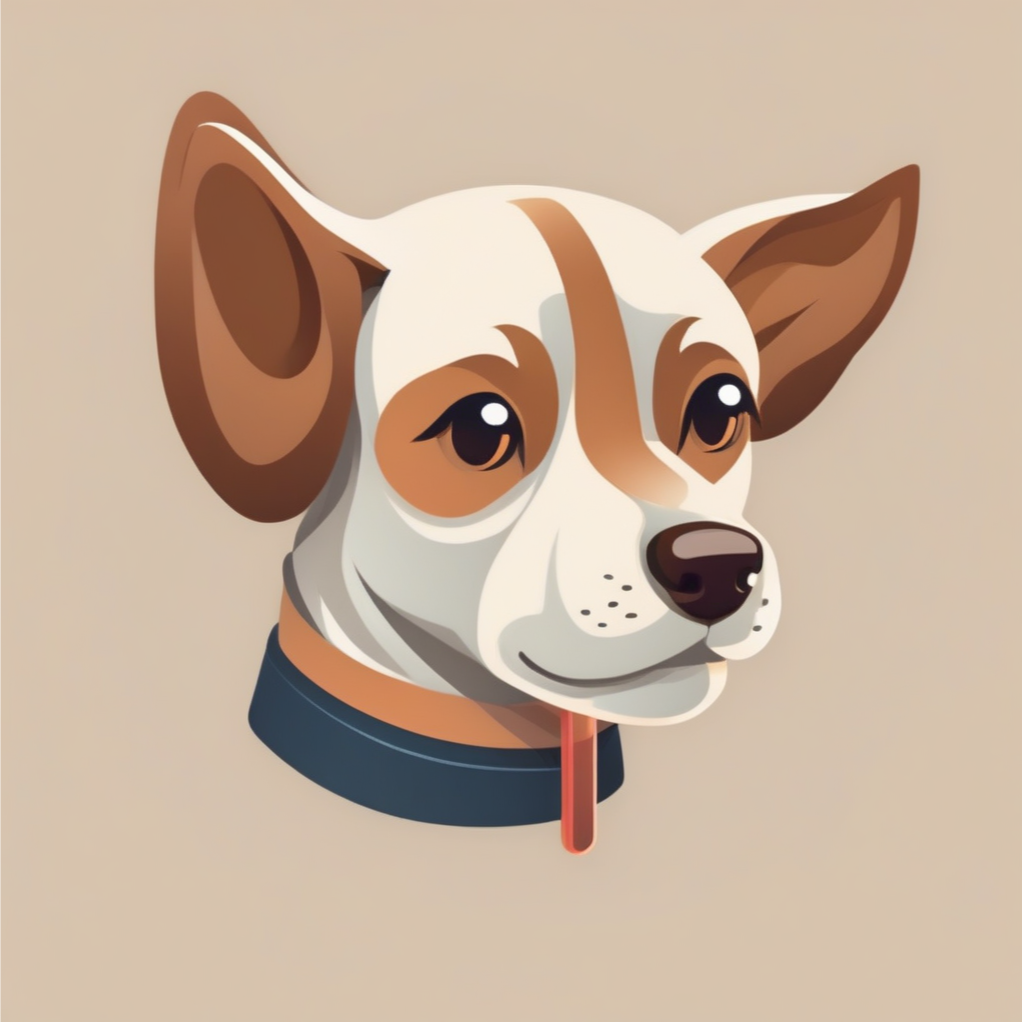The world of puppies is a fascinating one, especially for those lucky enough to welcome these furry companions into their lives. The transformation from a small, playful pup to a fully grown dog is a remarkable journey, and it’s only natural to wonder: When do dogs stop growing? In this article, we’ll explore the various stages of canine development and the factors that influence it.
Dogs typically stop growing between 18 to 24 months of age. Male dogs generally continue to grow for a few months longer than females. However, smaller dog breeds may reach their full size before their first year
When Do Dogs Stop Growing? – Unraveling the Growth Mystery
The growth of a dog isn’t as straightforward as one might think. Several elements, including breed, genetics, and overall health, come into play. To shed light on this intriguing process, let’s break it down into distinct stages.
Puppy Development Stages
| Weight Range | Age (Months) | ||||
|---|---|---|---|---|---|
| 6 months | 9 months | 12 months | 15 months | 18 months | |
| Small (0-20 lbs) | 75% fully grown | 90% | 100% | 100% | 100% |
| Medium (21-50 lbs) | 66% | 85% | 95% | 100% | 100% |
| Large (51-100 lbs) | 60% | 75% | 85% | 95% | 100% |
| X-Large (100+ lbs) | 50% | 65% | 80% | 90% | 100% |
0-3 Weeks – The Milk Teeth Debut
The early weeks of a puppy’s life are marked by rapid growth. During this period, they solely depend on their mother’s milk. This phase also witnesses the emergence of their tiny milk teeth, setting the stage for future chewing adventures.
4-8 Weeks – Growth and Development Unleashed
Between 4 and 8 weeks, puppies transition to solid food. Their growth continues at a steady pace, coupled with increased activity and playfulness. This is when they start socializing with their littermates, learning essential social skills.
8-10 Weeks – Socialization and Training
Around 8 to 10 weeks of age, puppies are at a critical developmental stage. It’s an optimal time for socialization and basic training as their bodies continue to grow, while their brains rapidly develop to understand the world around them.
11-16 Weeks – Potty Training and Energy Levels
During this period, puppies experience slightly slower growth, focusing more on muscle development and coordination. Their energy levels remain high, making it an excellent time for potty training and basic command learning.
17-20 Weeks – Mastering Coordination
Puppies become more coordinated between 17 and 20 weeks, enabling them to engage in more advanced physical activities. While their growth continues, they start looking more like miniature versions of their adult selves.
21-24 Weeks – The Path to Adulthood
Around the 5-month mark, many puppies start resembling young adult dogs in terms of size and appearance. Although their growth plates aren’t fully closed yet, they are well on their way to physical and mental maturity.
24+ Weeks – Maturation
At approximately 6 months of age, most puppies reach their full height. However, they may continue to fill out and gain muscle mass for several more months. By the age of one, most puppies have stopped growing taller.
Factors Influencing Puppy Growth
Puppy growth is influenced by various factors, including genetics, nutrition, and overall health. Larger breeds typically have a more extended growth period, while proper nutrition and a healthy lifestyle play vital roles in a puppy’s growth.
What to Consider When Your Dog Is Growing?
When caring for a growing dog, it’s essential to consider factors like breed size, exercise, and nutrition. Monitoring your dog’s growth and consulting a veterinarian can help ensure they are on the right track.
What Are Some Typical Conditions to Be Mindful of in Growing Dogs?
Orthopedic issues top the list of common concerns, with problems in the elbows, shoulders, hips, and other joints predominantly afflicting larger dogs, typically those weighing 50 pounds or more, according to Rooney. Remarkably small dogs can also grapple with hip or knee problems. However, Rooney underscores that the majority of growing dogs usually steer clear of these conditions.
Young dogs may experience a painful yet temporary bone inflammation known as panosteitis, which often necessitates medication, as mentioned by O’Bell. Larger and giant breeds, on the other hand, occasionally suffer from hypertrophic osteodystrophy—a painful swelling of the growth plates in the legs that can come with a fever. Fortunately, this condition usually resolves on its own, O’Bell reassures.
Inherited and congenital conditions encompass hip dysplasia (a misalignment of the ball and socket in the hip joint) and osteochondrosis (an abnormal development of cartilage in the joints). O’Bell notes that surgery may be required to correct these issues. The American Animal Hospital Association highlights that large breeds like German Shepherds, Labradors, and St. Bernards are more susceptible to these conditions. If you observe your dog limping or notice any anomalies in leg alignment, promptly consult your veterinarian or a surgical specialist.
Do Dogs Experience Growing Pains?
O’Bell points out that puppies don’t appear to undergo typical growing pains. Nevertheless, some orthopedic conditions, similar to those previously described, can manifest symptoms in young dogs. These symptoms may include limping, an abnormal gait or stance, or reluctance to partake in regular activities. Occasionally, affected areas may exhibit signs of heat, swelling, and pain. Furthermore, inflammatory conditions may induce fever, leading to lethargy and a decrease in appetite, O’Bell adds.
She also highlights that most puppies tend to be more energetic than adult dogs and might be more susceptible to minor injuries resulting from vigorous play, which can cause transient discomfort.
Do Care Requirements Differ for Growing Dogs?
According to O’Bell, all puppies should undergo periodic check-ups with their veterinarian, typically three or four visits during their first year of life. During these appointments, the vet will assess the puppy’s growth, including weight gain and overall condition. Rooney advises using common sense when monitoring your young dog’s health, paying attention to their regular habits, discussing any concerns with your vet, and staying vigilant for any signs of deviation from the norm.
Regarding dietary considerations, Rooney suggests opting for high-protein dog foods to support your puppy’s growth. Large-breed puppies can especially benefit from consuming large-breed puppy food, as these products aid in preventing excessively rapid growth, which can elevate the risk of orthopedic disorders. Your veterinarian can provide guidance to customize your puppy’s diet, ensuring proper weight gain and nutrient intake. Additionally to ample protein, young dogs require increased fat levels compared to adults, along with a well-balanced assortment of vitamins and minerals to facilitate growth and development. O’Bell emphasizes that your veterinarian serves as an invaluable resource for selecting the most suitable diet.
In terms of exercise, O’Bell recommends providing puppies with at least an hour of moderate activity daily. However, the appropriate amount of exercise may vary depending on the breed and age of your dog. Some puppies may be content with just a few minutes of play before needing a nap, while others may demand longer periods of stimulation. O’Bell points out that although strenuous exercise carries a theoretical risk for young dogs, caution is especially essential for large-breed dogs and those predisposed to conditions such as hip dysplasia. “We wouldn’t want to compromise their growth plates, particularly while they’re still developing,” she advises.
How to Exercise a Growing Puppy Safely
Exercising a growing puppy requires a delicate balance between physical activity and rest. Too much exercise can be detrimental to their developing bones and joints.
To exercise a growing puppy safely, it’s crucial to avoid activities that can harm their developing joints. Limit high-impact exercises like jumping, twisting, and skidding. Instead, opt for low-impact activities like short walks and gentle playtime. Always pay attention to your puppy’s energy levels, and if you notice signs of fatigue without them stopping to rest, put them on a leash and remove them from the situation to allow them to recover for a few minutes. Prioritize their well-being and long-term health during exercise.
Consult your veterinarian for guidance on age-appropriate exercise routines.
How to Feed a Growing Puppy
Feeding a growing puppy necessitates a well-balanced diet tailored to their specific needs. Feeding a growing puppy is crucial for their health and development. It’s recommended to feed them measured amounts of high-quality puppy food at regular intervals, typically 2-3 times per day. The exact amount and frequency should be determined based on your puppy’s age, breed, and individual body condition. Additionally, for large breed dogs, consider implementing moderate energy and food restrictions during their growth phase to reduce the risk of hip dysplasia without affecting their final adult size.
Follow your veterinarian’s recommendations for portion sizes and choose high-quality puppy food to support healthy growth.
Conclusion
Observing your puppy’s growth is a rewarding experience. While the exact timeline for when dogs stop growing may vary, ensuring they receive love, care, and proper nutrition guarantees they reach their full potential as healthy and joyful companions. Embrace each stage of their journey, from tiny milk teeth to fully grown, loyal family members.
Frequently Asked Questions About the Stages of Puppy Development
- At what age is a dog full grown? Dogs typically reach their full adult size and physical maturity between 12 and 18 months, although some larger breeds may continue to grow up to 2 years or more.
- Can you tell how big a puppy will get? It can be challenging to predict a puppy’s exact size as an adult, but you can estimate based on their breed and parental sizes. Consult with your veterinarian for a more accurate estimate.
- Do dogs grow a lot after 6 months? Most dogs experience significant growth in the first 6 months, but growth continues at a slower rate until they reach their full adult size.
- Can dogs grow after 3 years? While dogs may not grow in height after reaching adulthood, they can continue to fill out and gain muscle mass, especially with proper nutrition and exercise.
- Is a 2-year-old dog still a puppy? A 2-year-old dog is generally considered an adult, although some smaller breeds may still exhibit puppy-like behavior.
- How do I know if my dog is going through a growth spurt? Signs of a growth spurt in dogs can include increased appetite, clumsiness, and a noticeable increase in height or weight over a short period. Consult your vet if you’re concerned about your dog’s growth.
- What ages do dogs grow the most? Dogs typically experience their fastest growth during their first 6 months of life. Growth continues, albeit at a slower rate, until they reach maturity.
- At what stage do dogs grow the most? The most significant growth spurts in dogs occur during the puppy phase, especially in the first few months of life.
- Do dogs realize they grow up? Dogs don’t have a concept of growing up in the way humans do. They adapt to their changing bodies as they age but don’t have a cognitive understanding of the process.
- When is a female dog fully grown? Female dogs follow a similar growth pattern to males and are typically fully grown between 12 and 18 months, although this may vary depending on the breed.

